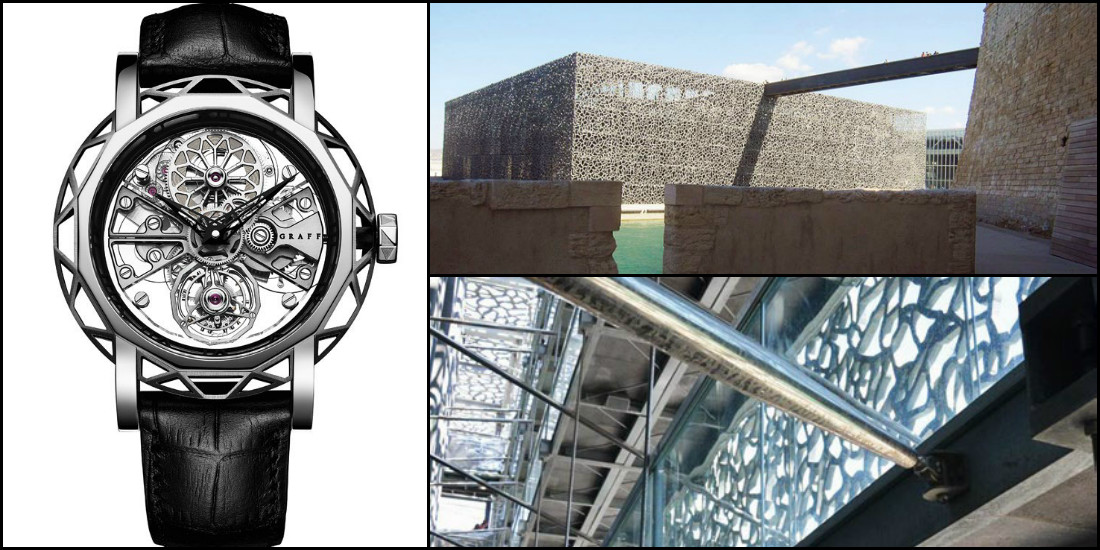
Autavia
CASE : stainless steel
DIAMETER : 42mm
MOVEMENT : mechanical self-winding, Caliber Heuer-02, 80h power reserve
FUNCTIONS : hours, minutes, seconds, chronograph, date
DIAL : black
CASEBACK : sapphire crystal
WATER RESISTANCE : 100m
STRAP : calfskin
Straight lines and curves, solids and voids, color and transparency effects. By comparing TAG Heuer’s re-edition of the Autavia with the construction of the Mercury Theater in Barvikha, near Moscow, Swiss architect Alex Leuzinger draws parallels between the first and the twelfth arts. When aesthetics focuses almost exclusively on motion…
The watch : Autavia, TAG Heuer
A rotating black aluminum bezel, a 42mm stainless steel case middle, a black dial punctuated by three snailed white chronograph counters, a new Manufacture chronograph movement. The long-awaited latest generation of the Autavia unveiled at this year’s Baselworld has exactly what it takes to top the podium. This new champion retains the retro look of the famous Autavia Ref. 2446 Mark 3 – released in 1966 and nicknamed “Rindt” in reference to famous F1 driver Jochen Rindt who wore it constantly – while treating itself to a few modern touches. While its mushroom-style pushers, fluted crown, Heuer logo and calfskin strap firmly establish it as the embodiment of vintage elegance, a date window and a sapphire caseback affording a fine view of Caliber Heuer-02 give it a resolutely on-trend feel. The overall result is a neo-retro model with a powerful design that has barely hit the track yet already attracted considerable interest among collectors and dedicated motorsports enthusiasts.
Its architectural alter ego : the Mercury Theater, Barvikha, designed by Meganom
 Founded in 1998, Meganom is an architectural practice based in Moscow. Its associates have decided to study the fields of architecture and urbanism in order to develop a new formal vocabulary capable of arresting spectators’ attention in exploring new urban contexts.
Founded in 1998, Meganom is an architectural practice based in Moscow. Its associates have decided to study the fields of architecture and urbanism in order to develop a new formal vocabulary capable of arresting spectators’ attention in exploring new urban contexts.
A distinctive Crimean rock, in particular its shape and position, gave its name to this architects’ practice and inspired its first project in 1998 – a rock-embedded glass house designed to defy storms.
The Mercury Theater is a concert hall built in Barvikha, in the Moscow region between 2003 and 2008, meaning 10 years after the company founding. Once again combining architecture with urbanism, the volume of this theater closes the perspective visible from the pedestrian zone of the adjacent shopping street. The inner space of the foyer is designed as an extension of the square before the theatre. The semi-transparent membrane reinforces this continuity reflecting the dynamic life of the street right the way through to the interior of the theater.
This dynamic is also expressed through the sculpted wood frame, as well as in the hydraulic technology serving to adjust to raise or lower the floor depending on varying requirements, and thereby to give life to all the elements composing the building.
thereby to give life to all the elements composing the building. Like the Mercury Theatre, this principle of motion is entwined with the history of the Autavia, a cult collection that is enjoying a new lease on life, at the crossroads between technology and speed.






